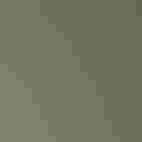Blue-winged Warbler
At a Glance
The simple buzzy song of the Blue-winged Warbler is often heard in brushy overgrown fields and thickets in the East during the summer. Although the bird is not especially shy, it can be a challenge to observe as it forages actively in the dense brush. In recent decades this species has been expanding its range northward, encroaching on the territory of its close relative, the Golden-winged Warbler. The two species often interbreed.
All bird guide text and rangemaps adapted from by Kenn Kaufman© 1996, used by permission of Houghton Mifflin Harcourt Publishing Company. All rights reserved.
Category
Perching Birds, Wood Warblers
IUCN Status
Least Concern
Habitat
Fields, Meadows, and Grasslands, Forests and Woodlands, Freshwater Wetlands, Shrublands, Savannas, and Thickets
Region
California, Eastern Canada, Florida, Great Lakes, Mid Atlantic, New England, Plains, Rocky Mountains, Southeast, Texas
Behavior
Direct Flight, Flitter, Rapid Wingbeats
Population
680.000
Range & Identification
Migration & Range Maps
Migrates mostly at night. Tends to arrive a little earlier in spring than the Golden-winged Warbler.
Description
4 1/2" (11 cm). Bright yellow head and underparts, with sharp black line through eye. Blue-gray wings with two white wing-bars. Tail short, with white spots in outer feathers. Female duller than male.
Size
About the size of a Sparrow
Color
Black, Blue, Gray, White, Yellow
Wing Shape
Rounded
Tail Shape
Notched, Square-tipped
Songs and Calls
Insect-like buzzy song, which sounds like a tired sigh, seee-bzzz, the bzzz pitched lower.
Call Pattern
Falling, Flat
Call Type
Buzz, Chirp/Chip, Hi
Habitat
Brushy hillsides, bogs, overgrown pastures, stream and woodland edges. Breeds in dry uplands in low shrubbery, brier patches, weed-grown fencerows, and bushy thickets; often in neglected fields or at the border of woods. Occasionally in deep swamp woods.
Sign up for ÃÛèÖAPP's newsletter to learn more about birds like the Blue-winged Warbler
Behavior
Eggs
5, sometimes 4-7. White, with fine brown spots on larger end. Female incubates, 10-11 days.
Young
Both parents feed nestlings. Young leave nest 8-11 days after hatching.
Feeding Behavior
Forages by moving about in shrubs and trees, often fairly low. Preferred method of foraging is by probing with bill into curled leaves. Also searches rather deliberately on outer tips of branches, perhaps probing into buds and flowers.
Diet
Insects and spiders. Details of diet not well known; probably feeds mostly on small insects, including beetles, ants, caterpillars, and grasshoppers, also spiders.
Nesting
Hybridizes with Golden-winged Warbler. Hybrids, known as "Brewster's Warblers," are fertile, and they backcross with the parent species and with each other; second-generation hybrids include a rare type known as "Lawrence's Warbler." Males sing two types of songs, one in territorial interactions and one in courting a mate. Nest site is well concealed in grass or blackberry vines, sometimes under a bush or sapling, close to or on the ground. Attached to upright stems of grass or weeds, especially goldenrod. The bulky nest is a narrow, deep, inverted cone, usually built by the female alone. Constructed of dead leaves, grass, and beech or grapevine bark, and lined with plant fibers or animal hair.
Conservation
Conservation Status
Despite being parasitized often by cowbirds, seems to be holding up well in numbers. May be gradually outcompeting and replacing the Golden-winged Warbler.
Climate Threats Facing the Blue-winged Warbler
Choose a temperature scenario below to see which threats will affect this species as warming increases. The same ÃÛèÖAPP change-driven threats that put birds at risk will affect other wildlife and people, too.




